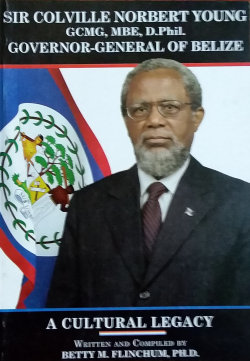A Narrative of Political Parties in Belize

Buy online ($)
Type
Book
Authors
ISBN 10
9769556378
ISBN 13
9789769556379
Category
Unknown
[ Browse Items ]
Publication Year
2017
Publisher
Pages
236
Description
Belize’s parliamentary democracy is best exemplified by its two-party system, with the two leading political parties the People’s United Party, 1950 and the National Independence Party, 1958 and its successor the United Democratic Party, 1973, alternating their predominance in government and as the loyal opposition. It may come as a surprise to many that since the 1950s some 26 parties, many of them long-defunct and now forgotten, have sought to influence the political future of the country. In this work, Lawrence Vernon, a distinguished librarian and political historian, sets out to chronicle the development of these parties in an effort to ensure that their leaders, manifestos, and impact are not left locked away in archives or in the memories of a few. After introductions which rightly so identify the 1949 devaluation of the British Honduras Dollar as the match that lit the nationalist fires and underscores the importance of Antonio Soberanis Gomez as the father of both trade unionism and nationalism, the First and Third Sections are devoted to the rise of the People’s United Party (P.U.P.) and the United Democratic Party (U.D.P.) from their founding (1950 for the former and 1973 for the latter) up to independence. Section Two describes the rise of those parties that were in opposition to the P.U.P. starting with the National Party in 1951 and ending with the People’s Development Movement in 1969. Section Four briefly tells the stories of six small parties that were active between 1974 and 1981. Section Five examines 10 parties that have sought to become viable third parties, beginning with the National Alliance for Belizean Rights in 1991. The book ends with short notes on the multiple elections in 2015 that culminated with the U.D.P.’s historic third-term victory. The author has systematically examined Belizean newspapers, particularly that goldmine of Belizean history, the Belize Billboard, to gather a wide array of information on these parties. The focal points of the narrative are the parties’ origins, leaders, candidates, aims, performance in elections, stance on national issues and, all too often, their demise or merger. The numerous tables of elections results are a great resource, as well as Appendix IV with the national elections results (1984-2015). Thus, the book provides a handy guide for the student who perhaps has never heard of the Christian Democratic Party, (nor its predecessor the Democratic Agricultural and Labour Party), nor the People’s Democratic Party. The strength of the work lay in the author’s unbiased account of the trajectory of these political parties. With such a sturdy foundation, others (in line with the works of Cedric Grant, Assad Shoman, Evan X Hyde, Myrtle Palacio, Nicholas Pollard, Jr., Godfrey Smith, and Dylan Vernon) may wish to probe deeper into the parties’ histories and impacts; for example, the chronic failure of third party candidates to make it first past the post in party politics in Belize cries out for analysis. This substantially revised and expanded Narrative is a testament to the author’s persistent dedication since 1987 to ensure that the contributions of all the political parties to Belize’s development will not go unrecognized. It adds to the number of affordable books that are now available to teach Belizean politics at the tertiary level – an undertaking that is too long overdue. Clearly, both the student and general public will remain indebted to the author for deepening our appreciation of the roots of our young but vibrant democracy. Dr. Herman Byrd - from Amzon
Number of Copies
2
| Library | Accession No | Call No | Copy No | Edition | Location | Availability |
|---|---|---|---|---|---|---|
| Main | 119 | 1 | Yes | |||
| Main | 120 | 2 | Yes |




